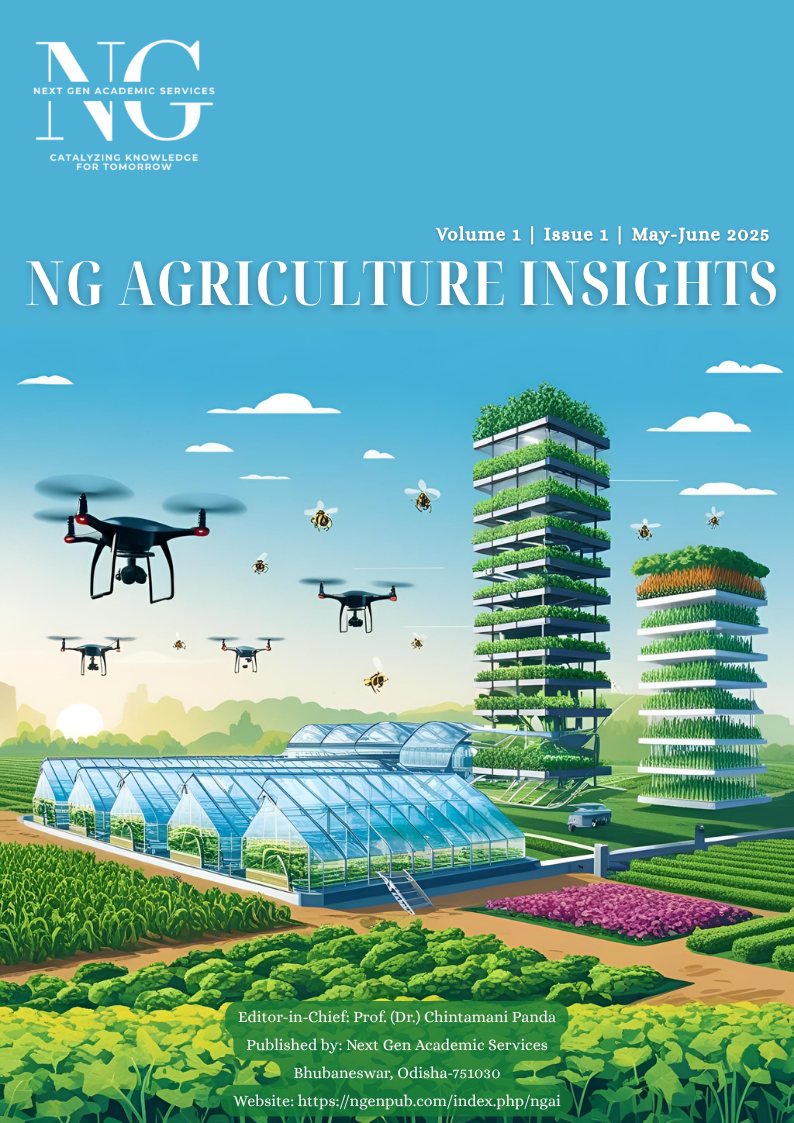Stubble Burning: Environmental Impact and Sustainable Management
DOI:
https://doi.org/10.5281/zenodo.15442921Keywords:
Biodiversity, Consequences, Environment, Stubble BurningAbstract
Although combustion is a necessary human activity, the poisons produced by the incomplete process and its consequences have caused social turmoil. The consequences of declining health are unknown to the general public: environmental damage, biodiversity loss, and deterioration of product quality. Despite the authorities' sideways application of strategic planning to mitigate the consequences on the population and industrial infrastructure, the local populace still doesn't fully understand. Despite the importance of this subject, not much research has been done on it thus far. The current review aimed to find the underlying causes, environmental effects, and management techniques of stubble burning, particularly in India. Among the sustainable ways to handle vestiges are in-situ residue management, the manufacture of animal and mushroom feed, composting, biochar manufacture, bio-thermal power plants, and the paper sector. Happy Seeder has emerged as a mechanical and successful in-situ management technique. Farmers can use any of the techniques mentioned earlier to manage their trash in an environmentally friendly way by overcoming the obstacles and lessening the environmental impact, no matter how much land they own.
References
Gottipati, R., Burra, P. M., & Menon, S. (2021). Stubble burning: Root cause, impacts and its management in Indian scenario. Environment Conservation Journal, 22(3), 37-45. https://doi.org/10.36953/ECJ.2021.22305
Gupta, S., Summuna, B., Gupta, M., & Mantoo, A. (2016). Mushroom cultivation: A means of nutritional security in India. Asia-Pacific Journal of Food Safety and Security, 2(1), 3-12.
Humphreys, E., Blackwell, E., Sidhu, H., Malkeet-Singh, S.-S., Manpreet-Singh, Y., & Anderson, L. (2006). Direct drilling into stubble with happy seeder. IREC Farmers Newsletter, 172.
Lehmann, J., & Joseph, S. (2015). Biochar for environmental management: An introduction. In Biochar for environmental management (pp. 1-13). Routledge. https://doi.org/10.4324/9780203762264
Lohan, S. K., Jat, H., Yadav, A. K., Sidhu, H., Jat, M., Choudhary, M., Peter, J. K., & Sharma, P. (2018). Burning issues of paddy residue management in north-west states of India. Renewable and Sustainable Energy Reviews, 81, 693-706. https://doi.org/10.1016/j.rser.2017.08.057
Mandeep Singla, M. S., Sharma, A., Grewal, R., & Parmar, O. (2012). Evaluation of paddy straw bedding for crossbred cows in winter. https://www.cabidigitallibrary.org/doi/full/10.5555/20153387041
Mittal, S. K., Singh, N., Agarwal, R., Awasthi, A., & Gupta, P. K. (2009). Ambient air quality during wheat and rice crop stubble burning episodes in Patiala. Atmospheric Environment, 43(2), 238-244. https://doi.org/10.1016/j.atmosenv.2008.09.068
Na, Y., Lee, I., Park, S., & Lee, S. (2014). Effects of combination of rice straw with alfalfa pellet on milk productivity and chewing activity in lactating dairy cows. Asian-Australasian Journal of Animal Sciences, 27(7), 960. https://doi.org/10.5713/ajas.2013.13597
Prusty, A. K., Mohapatra, B. P., Rout, S., Pradhan, K., Tripathy, B., & Sahoo, G. (2021). Information Technology Emergence in Agriculture during COVID-19. Bulletin of Environment, Pharmacology and Life Science, 10(9), 185-190.
Prusty, A. K., Mohapatra, B. P., Rout, S., Senapati, R., & Padhy, C. (2021). Social media: Boon to Agriculture. PLANTA, 2, 245-250.
Ravindra, K., Singh, T., & Mor, S. (2019). Emissions of air pollutants from primary crop residue burning in India and their mitigation strategies for cleaner emissions. Journal of Cleaner Production, 208, 261-273. https://doi.org/10.1016/j.jclepro.2018.10.031
Saha, P., Prusty, A. K., & Nanda, C. (2025). An overview of pluralism in agricultural extension and advisory services. International Research Journal of Multidisciplinary Scope, 6(1), 131-138. https://doi.org/10.47857/irjms.2025.v06i01.02074
Sain, M. (2020). Production of bioplastics and sustainable packaging materials from rice straw to eradicate stubble burning: A Mini-Review. Environment Conservation Journal, 21(3), 1-5. https://doi.org/10.36953/ECJ.2020.21301
Singh, R., Dhaliwal, H., Humphreys, E., HS, S., Singh, M., Singh, Y., & Blackwell, J. (2008). Economic assessment of the Happy Seeder for rice-wheat systems in Punjab, India. 52nd Annual Conference of the Australian Agricultural and Resource Economics Society (AARES 2008).
Downloads
Published
Issue
Section
License
Copyright (c) 2025 Sai Krishna Reddy Jonnala, Harshitha Chikene (Author)

This work is licensed under a Creative Commons Attribution 4.0 International License.





